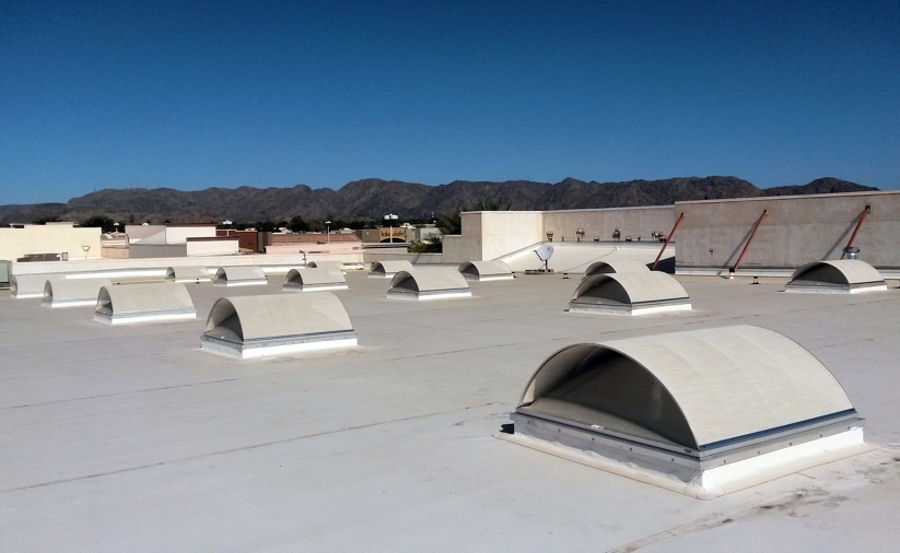After reading through our last post documenting the durability and weather readiness of an externally mounted Sky Shade over a skylight, many savvy consumers may ask why even bother with a shade on the outside? Big deal, the Sky Shade survived Snowvember2018, why not just install the sunshade on the inside where there is no abuse and potential damage from the elements?
When researching skylight shading options, one might easily perceive internally mounted skylight shades as being the simplest and best option. A shade on the inside of the building may allow for easy access, simple installation, and provide manual control or even automation to open and close. While these considerations may be true in some instances, what is being missed here is the real function and performance parameters of solar shade screens. According to the U.S. Department of Housing and Urban Development, stopping the sun’s heat externally before it penetrates windows is up to seven times more effective than using interior blinds or curtains.
Here in Phoenix, solar radiation heat gain through windows often accounts for 50 percent of the air-conditioning load in the summertime, so we know that window and skylight shading is important. An externally installed shade screen over a window or skylight will truly and effectively reduce this solar heat gain. When the shade is placed outside of the glazing, the sun’s heating rays are largely blocked, filtered and scattered before they even enter the building. This results in a direct reduction of heat gain inside the building.
Energy Star product rating guidelines on skylights is for a Solar Heat Gain Coefficient (SHGC) value of less than .28 for the South/Central and Southern zones of the US (cooling predominant zones). All fancy nerd talk for how much heat enters through the skylight into the building. Bottom line – the lower the number on the Energy Star sticker, the better. This goal of a SHGC less than .28 can be difficult to achieve with many skylights. Even some of the more energy efficient skylight models hover right at that baseline Energy Star number. However, with the addition of a typical exterior mounted Sky Shade system, as much as 80% of the Sun’s heat can be blocked before even hitting the lens of your skylight. This can create a dramatically lower adjusted SHGC of your skylight and in most cases much lower than any current Energy Star guidelines. These results simply cannot be achieved with an interior mounted shade system.
If a shade screen is placed on the inside of the window or skylight, the heating rays have already entered the climate of the building’s interior. The resulting heat gain is simply diffused to the interior by the shade screen, and/or absorbed and re-radiated to the inside. Most of the heat is still in the building and still impacting the cooling system. An occupant standing directly under a skylight with an internal shade screen may perceive a reduction of heat, but the heat gain has still occurred and is just a bit more diffused at the ceiling level, mixing with the interior air and additionally loading the HVAC system.
Numerous reports on the effectiveness of window shade screens have been produced over the recent years of building science studies. The Department of Energy, the EPA, HUD, and Berkeley Lab all have well-detailed documentation describing many building energy improvement measures and solutions, including externally mounted solar shade screen systems. Fun reading for these lingering winter months! But summer is on the way – so plan ahead, research well, and prepare your home for a cooler and more comfortable environment.


Leave A Comment
You must be logged in to post a comment.